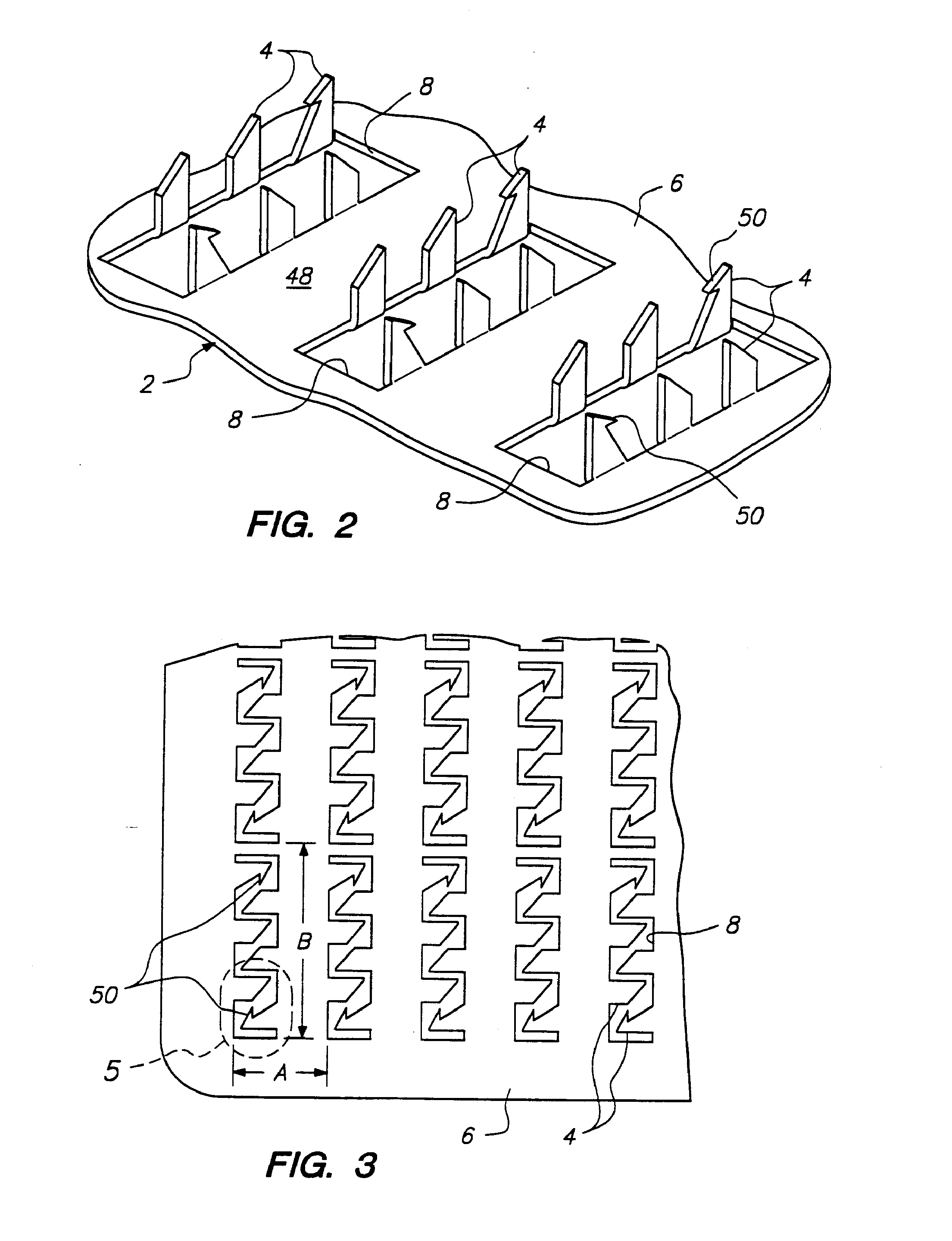Device with anchoring elements for transdermal delivery or sampling of agents
a technology of transdermal agent and anchoring element, which is applied in the direction of catheters, applications, therapy, etc., can solve the problems of insufficient rate of delivery or flux of polypeptides through the skin to produce a desired therapeutic effect, polypeptides and proteins are easily degraded during the process, and the transdermal delivery of peptides and proteins still faces significant problems
- Summary
- Abstract
- Description
- Claims
- Application Information
AI Technical Summary
Benefits of technology
Problems solved by technology
Method used
Image
Examples
example
[0083] The effect of the present design was evaluated on the skin resistance of a hairless guinea pig. A microblade array of two square centimeters was applied to ECG electrodes of five square centimeters. The blade array and electrodes were then applied to the skin of the animal. Resistance measurements were taken two minutes after application of the electrode to the skin of the animal. A decrease in resistance was observed indicating that penetration of the blades into the skin had occurred.
[0084] The device was evaluated for its effect on electrotransport flux of a decapeptide in the hairless guinea pig. The following are specifications for the device: the device consisted of a sheet having a plurality of rectangular openings having six blades, three on each long side of a 860 μm by 250 μm rectangle resulting in a 0.22 mm2 open area for each opening. Each set of three blades started at the opposite end of the rectangle as the opposing set of blades. All of the blades were about ...
PUM
 Login to View More
Login to View More Abstract
Description
Claims
Application Information
 Login to View More
Login to View More - Generate Ideas
- Intellectual Property
- Life Sciences
- Materials
- Tech Scout
- Unparalleled Data Quality
- Higher Quality Content
- 60% Fewer Hallucinations
Browse by: Latest US Patents, China's latest patents, Technical Efficacy Thesaurus, Application Domain, Technology Topic, Popular Technical Reports.
© 2025 PatSnap. All rights reserved.Legal|Privacy policy|Modern Slavery Act Transparency Statement|Sitemap|About US| Contact US: help@patsnap.com



